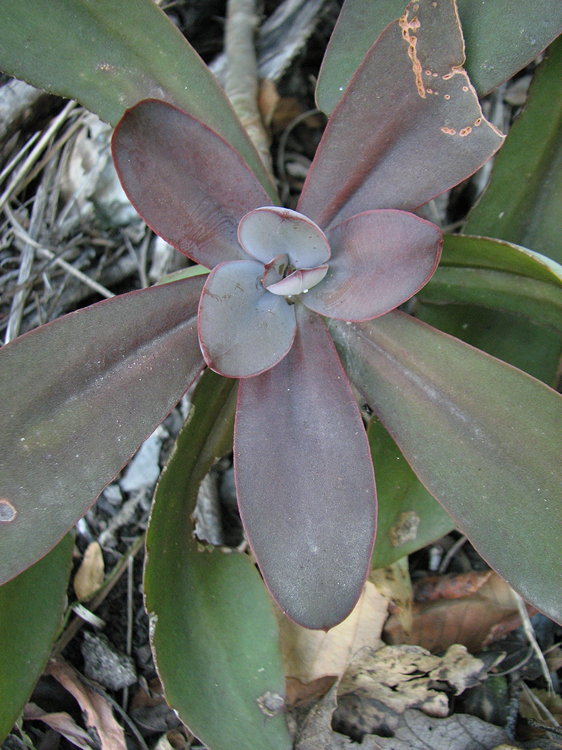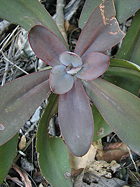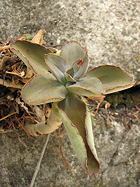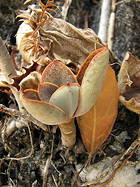Not to be confused with the Venezuelan E. pendulosa, this Mexican species is likely to be the more popular horticultural subject. It is quite distinctive in its genus on several counts. The specific epithet refers to the pendulous nature of the flowers, borne on pendent pedicels from erect racemes. The flowers are a lovely salmon pink and are beautifully illustrated in Pilbeam’s The Genus Echeveria. Equally distinctive is the foliage. The leaves are quite thick, obovate to oblanceolate, and shaped rather like the bowl of a spoon, being concave on top. The coloration is also distinctive among echeverias as new leaves are a velvety-looking lavender gray with chestnut-brown margins persisting as the leaf color ages to green. Our seedlings, however, are distinctly maroon-blushed and glabrous, as are the mature leaves. The velvety look is by virtue of a finely papillate texture, rather than hairs. The few-leaved rosettes of mature plants are at the tips of stems to 30 cm, but these can be cut and re-rooted, while the bases should branch to form a cluster like that illustrated by Pilbeam. The species has not been readily available in cultivation. We offer HBG 134253, plants from seed collected near the type locality along the Río de el Vado, between El Vado and San Sebastian de las Grutas, Oaxaca, Mexico. This is a rather dry yet bucolic valley with a perennial stream lined with gnarled Taxodium mucronatum (Montezuma cypress). The echeverias grow on steep cliffs safe from the goats, which have plenty of water to drink and other vegetation to munch. $7.

Published in the Cactus and Succulent Journal, Vol. 90 (2), Summer 2018



